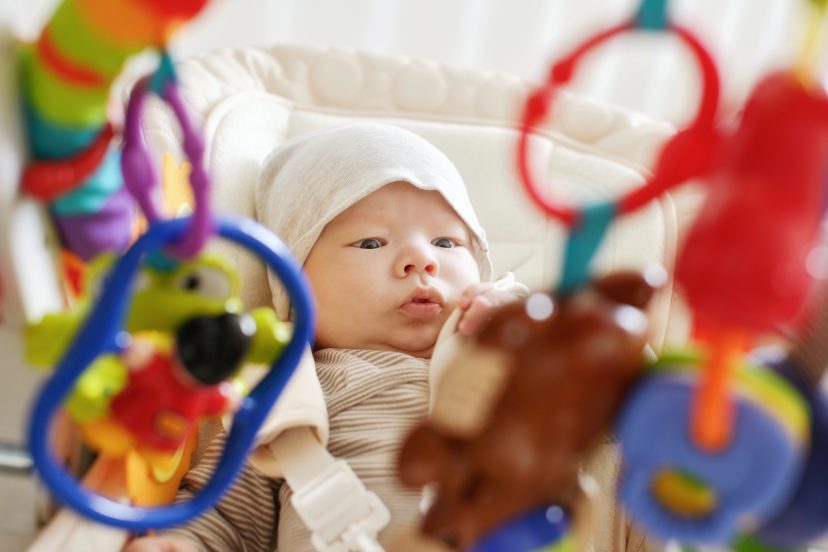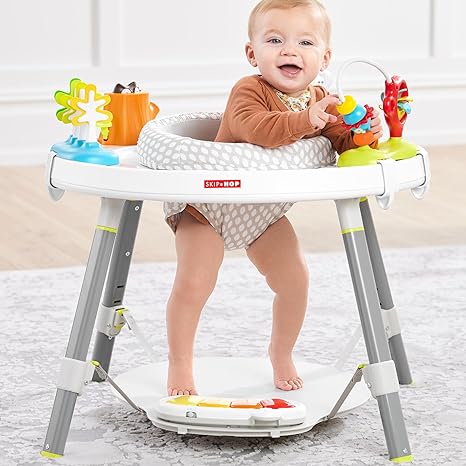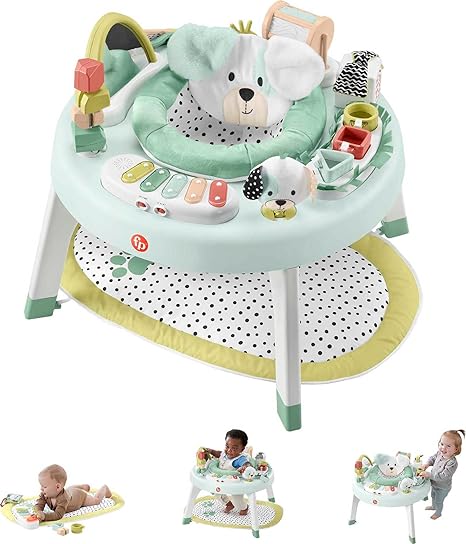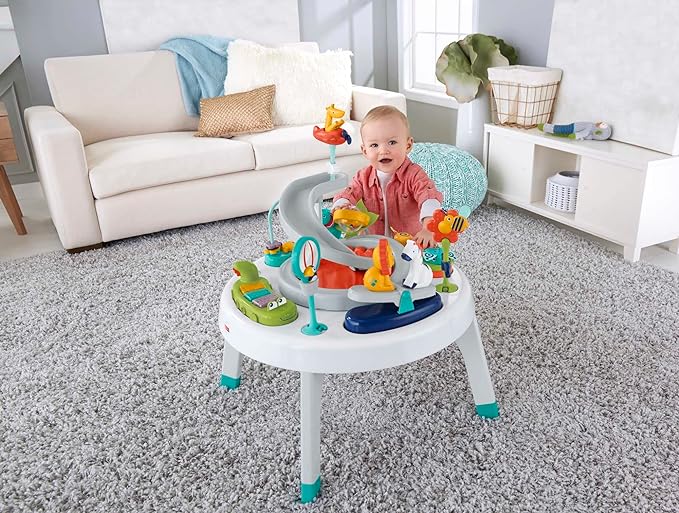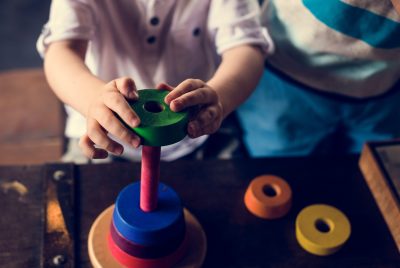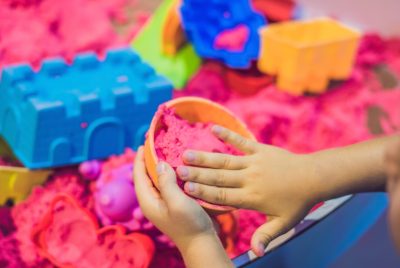Baby Activity Center – The Joy of Play
Today I want to share my enthusiasm for baby activity centers and their role in promoting healthy playtime for infants. A baby activity center offers versitile and engaging play areas specifically designed to stimulate a child’s physical, cognitive, and sensory development. In this article, I will delve into the importance of baby activity centers, the benefits they offer, and provide valuable suggestions for choosing and utilizing them effectively.
What is a Baby Activity Center?
A baby activity center, also known as a play center or activity saucer, is a specially designed interactive play area for infants and young children. It typically consists of a base with a seat or platform that allows the baby to sit or stand while engaging with a variety of toys, buttons, and activities.
This Skip Hop Activity Center is one oif the most populer Interactive Play Centers with 3-Stage Grow-with-Me Functionality.
Baby activity centers often feature a range of toys and interactive elements such as buttons, gears, spinners, mirrors, musical instruments, and shape sorters. They may also include lights, sounds, and different textures to provide sensory stimulation. Some come with adjustable height settings to accommodate the growing needs of the baby.
Importance of Baby Activity Centers
Baby activity centers such as this Fisher-Price one play a vital role in supporting a child’s overall growth and development. They offer a safe and stimulating environment that encourages exploration, promotes sensory integration, and enhances fine and gross motor skills.
Engaging with activity centers from an early age can foster cognitive abilities, creativity, and social interaction. Here are some key aspects of baby activity centers and their impact on child development
Physical Development
Baby activity centers promote physical development by encouraging movement, coordination, and muscle strength. They often feature toys, buttons, and gears that require grasping, reaching, and pushing, helping babies enhance their fine motor skills. Additionally, activity centers with jumpers or walkers provide opportunities for strengthening leg muscles and improving balance
Cognitive Development
Activity centers engage babies in various cognitive activities. They introduce cause-and-effect relationships as infants push buttons, turn knobs, or manipulate objects, fostering their understanding of how actions lead to outcomes. Interactive features like lights, sounds, and textures stimulate sensory exploration, while shape sorters and puzzles enhance problem-solving and cognitive abilities.

Sensory Stimulation
Baby activity centers offer a range of sensory experiences that contribute to sensory development. They incorporate different textures, colors, and sounds, providing babies with opportunities to engage their senses and develop sensory processing skills. Such stimulation aids in sensory integration, helping infants make sense of the world around them.
Social and Emotional Development
Activity centers encourage social interaction and emotional development. They often have toys or mirrors that promote self-awareness and facial recognition. When babies engage with activity centers in the presence of caregivers or peers, they learn about sharing, taking turns, and interacting with others, fostering social skills and emotional connections.
Language and Communication Skills
Many activity centers include elements that support language and communication development. They may have buttons that produce sounds, music, or spoken words, allowing infants to associate sounds with actions or objects. Through repetitive play, babies can develop early language skills, vocabulary, and communication patterns.
Independent Exploration
Baby activity centers provide a safe space for independent exploration. They allow infants to engage with stimulating toys and activities at their own pace, promoting curiosity, discovery, and a sense of autonomy. Independent play fosters self-confidence and the ability to entertain oneself.
Parent-Child Bonding
Playing together creates opportunities for meaningful interaction between parents and babies. Engaging in playtime, talking, and demonstrating how to use the different features of the center not only strengthens the parent-child bond, but also helps develop trust and emotional connection.
Factors to Consider When Choosing a Baby Activity Center
When selecting an activity center, it is essential to consider several factors to ensure it aligns with your baby’s needs and safety requirements.
Safety Considerations: Safety is paramount when it comes to baby products. Look for ones that meet safety standards, have sturdy construction, and feature secure harnesses and non-toxic materials.
Age Appropriateness: Consider your baby’s developmental stage & choose an activity center that offers appropriate challenges and features suitable for their abilities.
Features and Interactive Elements: Aim for activity centers with a variety of engaging toys, textures, sounds, and colors that promote exploration. Interactive elements like lights, music, and removable toys add to the fun and learning experience.
This activity Center has a whole host of featuires including removable sensory toys for tummy time, BPA-free silicone teether, stacking “stones,” 3 shapes to nest & sort, and a soft book with crinkle pages.
Ease of Use and Portability: Consider the ease of assembly, adjustability, and storage options of the activity center. If you plan to travel or move the center around the house, opt for a lightweight and portable design.
Setting Up a Baby Activity Center: Once you have chosen the perfect baby activity center, it’s time to set it up. Ensure it is placed on a level surface and provide ample space for your baby to move around comfortably.
Engaging Activities for Baby Play: Encourage active play and interaction by introducing age-appropriate toys, puzzles and books that that align with your baby’s interests.
Parental Supervision and Interaction: While activity centers offer a secure environment, parental supervision and interaction are crucial. Engage with your baby during playtime, sing songs, talk, and demonstrate how to use the different features. Your involvement strengthens the bond and enhances the learning experience.
Transitioning to Other Developmental Stages: As your baby grows and reaches new milestones, adapt the activity center accordingly. Gradually introduce new toys, challenges, and activities to support their changing needs and abilities.
This Fisher-Price Baby to Toddler Toy 2-In-1 Sit-To-Stand Activity Center is perfect as it grows with your baby.
Final Words From Me
Baby activity centers are valuable tools for promoting healthy play and development in infants. By choosing the right activity center and actively engaging with your baby, you can provide a foundation for their cognitive, physical, and sensory growth. Embrace the joy of playtime with your little one and witness the incredible benefits it brings.
FAQ’s
What age is appropriate for a baby to start using an activity center? Babies can typically start using them once they can hold their head up steadily without assistance, which is usually around 4 to 6 months of age. However, it’s important to follow the specific recommendations of the activity center’s manufacturer regarding age and weight limits.
Are activity centers safe for babies? Yes they are generally safe when used according to the manufacturer’s instructions. Ensure the activity center is set up on a flat, stable surface and always supervise your baby while they are using it.
What are the benefits of an activity center? They help promote motor skills, such as reaching and grasping, as well as coordination and balance. They also stimulate sensory development through various textures, colors, and sounds.
How long should a baby stay in an activity center at one time? It’s generally recommended to limit time to about 15-20 minutes at a time. Prolonged periods can lead to overstimulation or discomfort.
Can an activity center help with a baby’s development? Yes. They can play a role in a baby’s development. They encourage the practice of motor skills and provide sensory experiences that are crucial in the early stages of development.

